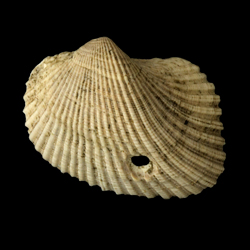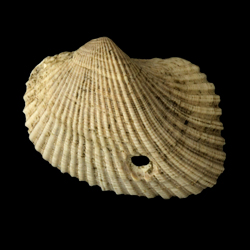
Noetiidae

Overview
Common name: False ark clams
Key morphological features: Small to medium-sized, equivalve clams with robust shells that are oval to rectangular or triangular in outline. Valves are inflated, usually with exterior ornamentation consisting of closely spaced radial ribs or cancellated patterns, and are composed of aragonite. Valve interiors have a simple, uninterrupted pallial line and interior shell margins can be either smooth or denticulate depending on the species. Species of Noetiidae are either isomyarian or have a smaller anterior than posterior adductor muscle scar. The hinge is straight or slightly curved and taxodont, with reduced or absent teeth at the umbo, and the cardinal area is characterized by transverse grooves, as opposed to the chevron-shaped grooves of other families in the Arcoida. Source: Mikkelsen, P.M., and Bieler, R. 2008. Seashells of Southern Florida: Bivalves. Princeton, New Jersey: Princeton University Press. 503 pp.
Geological range: Cretaceous to Recent (Mikkelsen & Bieler, 2008).
Geographic distribution: A distributional map for modern Noetiidae may be accessed from OBIS. A distributional map for ancient Noetiidae may be accessed from the Paleobiology Database.
Diversity: There are 38 recognized living species of Noetiidae and 13 genera (WoRMS database, unvetted). The Paleobiology Database recognizes 7 fossil genera and 61 fossil species (unvetted).
Paleoecology: The Noetiidae are marine, filter-feeding bivalves that are predominantly free-living, although some species live byssally attached to hard substrates.
Phylogenetic status: Monophyletic. The recent molecular phylogenetic analysis by Combosch and Giribet (2016) supports the monophyly of Family Noetiidae.
